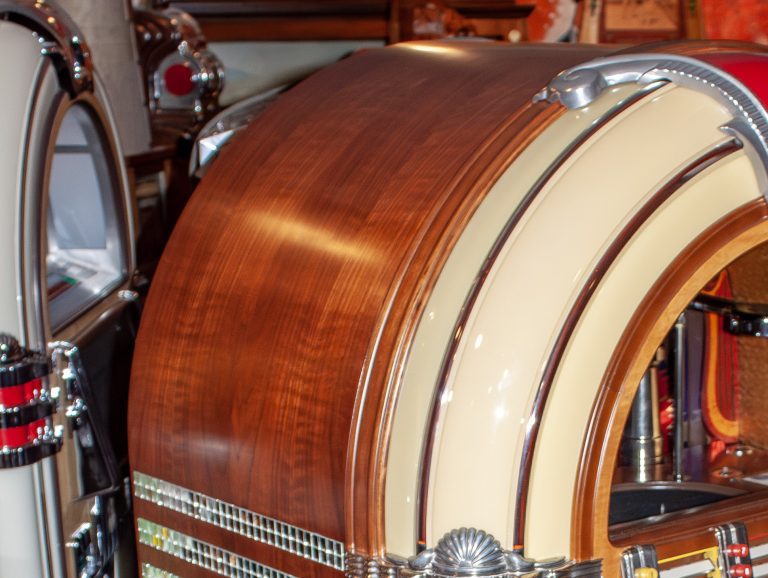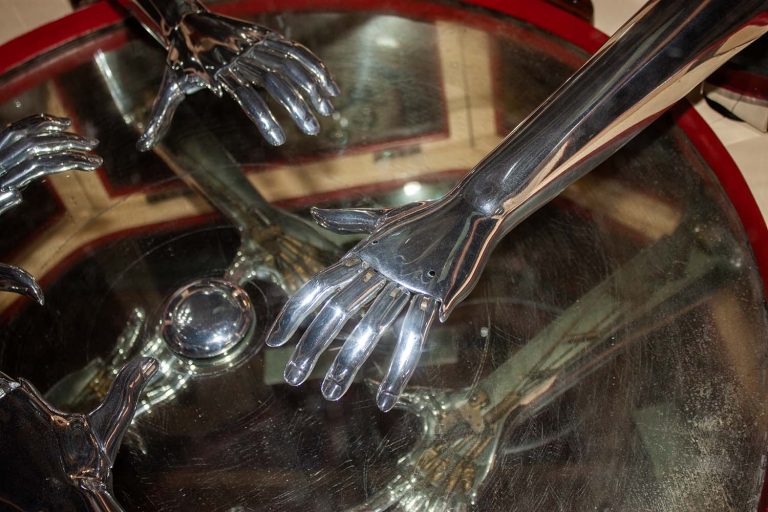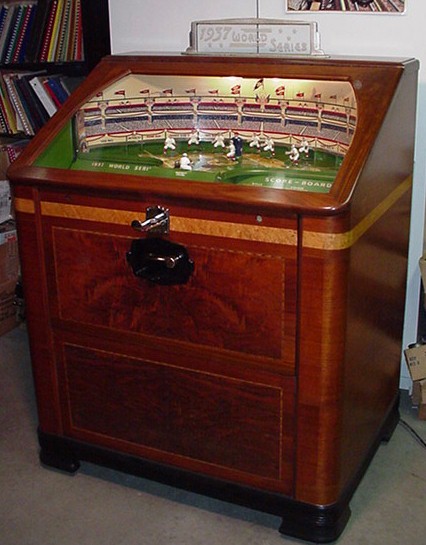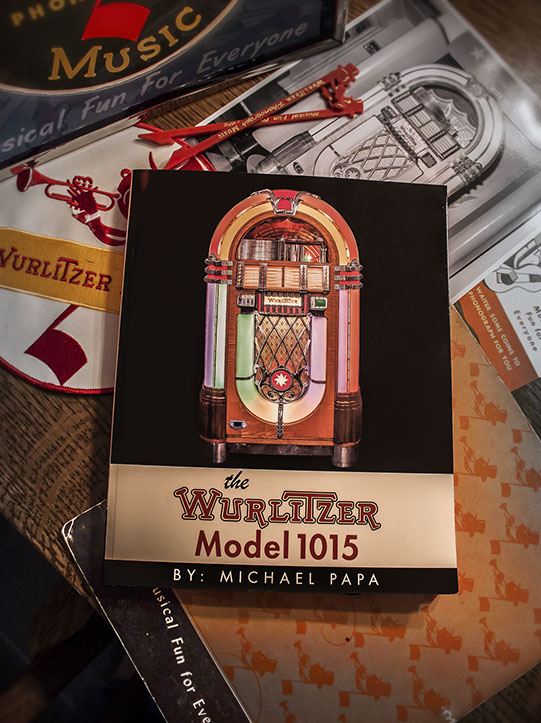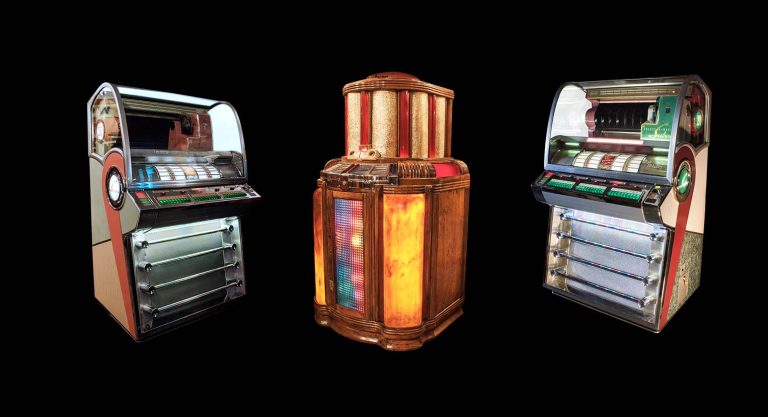The Ambassador
The New Look for your 1015s

The Ambassador is a quite unusual and somewhat rare variation of the famous Wurlitzer 1015. The Ambassador was basically a 1015 conversion “front kit” that was made and sold by Tom Schwartz, firm head, Ambassador, Inc in Kansas City, Missouri. The front kit was sold with the idea that it would give your 1015 a “New Look.” A very important aspect about this kit was that it eliminated the eight bubble tubes and their heaters. Bubble tubes were introduced in jukebox design by Paul Fuller, head designer at Wurlitzer. The model 800 in 1040 was the first to sport 3 bubble tubes behind the middle amber plastic. Bubble tubes became more and more prolific in the Wurlitzer line. After World War II, the 1015 topped them all with 8 long bubble tubes all the way around the jukebox. It became the most popular jukebox design of all times with over 35,000 units sold in 1946 and 1947. Despite this popularity, music operators were sick and tired of replacing broken glass bubble tubes on location and the bubble tube idea went out as quickly as it came in. Even the general public had had enough of the craze. New models were coming out fast to replace the 1015’s and Tom Schwartz thought he could capitalize two operator objectives at one time. One, enough already with the bubble tubes, and two, get some newer looking jukeboxes on the floor.
Schwartz must have though that he could capitalize on the popularity and lack of interest in bubble tubes of the 1015 with his fronts. Originally sold for $96.50, the Ambassador front included new side pilasters, a new single upper arch plastic, grill bars and frame, polished aluminum accents placed over adjoining plastics, two name plates, red grill plastics and silver grill cloth. By October 30, 1948, Ambassador Inc., was set to ship its jukebox front kits.
Starting on November 13th, 1948, officials of Ambassador, Inc toured the new and improved 1015 in Seven Middle Western and Eastern cities. During their 10 day tour, Swartz and business partner J.B. Balocca lined up distributors for the front kit, which resulted in the following article in the December 18, 1948 issue of Billboard Magazine.
From the Billboard…
“Six Distribs Set for 1015 Front By Ambassador
Kansas City, MO., December 11, 1948
Ambassador, Inc., manufactures of a new front designed for the Wurlitzer 1015, has appointed six distributors. Tom Schwartz, firm head, announced this week.
Those named are Miller Vending Company, Grand Rapids, Mich., headed by Bill Miller, for Western Michigan; Frank’s Music Company, Detroit, headed by Frank Olivett, for Detroit and Eastern Michigan; Ace Phonograph Company, Cleveland, headed by Joe Valenti, for Cleveland and Northern Ohio; Morry Coret, Cincinnati, for Southern Ohio and Northern Kentucky; Pittsburgh Coin Machine Exchange, Pittsburgh, Headed by Louis G. and Meyer F. Popkins, for Greater Pittsburgh and Western Pennsylvania, and Boro Automatic Music Company, Brooklyn, headed by Albert Herman, for the Greater New York area.
The Ambassador front uses only the wooden portions of the original cabinet and the selector panel. Its side pilasters are of clear plastic, while the top arch comes in red, yellow or green. Colors are not painted on but are actually impregnated in the plastic. Grill bars are clear, ribbed plastic and the plastic grill frames are the same color as the arch. Grill cloth is silver. The front kit contains polished aluminum in lacquer finish, comes with two name plates, one reading Ambassador, while the other is individually letters to the operator’s specification.”
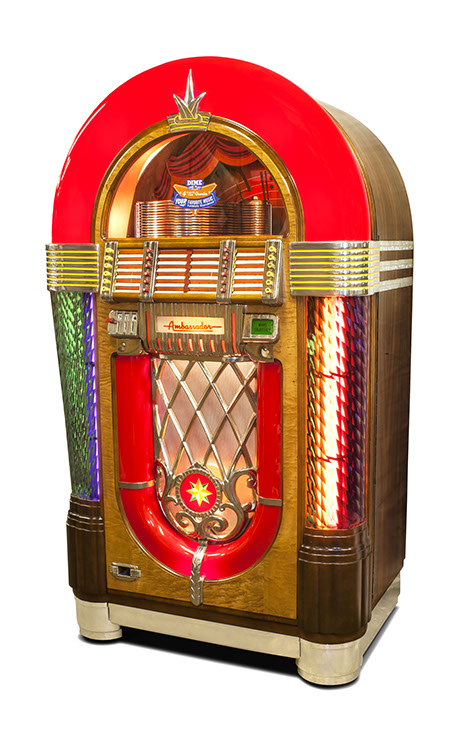
The Ambassador
Now Only $79.50

Though there are only six distributors mentioned in this article and one other mentioned on the same page, there is evidence for others in Canada.
Mid January 1949, Ambassador, Inc. exhibited the conversion front at the Coin Machine Institute show in Chicago. January 22, 1949, a month and a half from the initial showing, the company was ready to cut the price to $79.50 instead of $96.50. Ambassador claimed that this price cut was a result of stepped up production. However with the very few surviving Ambassadors today, one can easily calculate that not many of these fronts were made. The last known advertisement for the kit read, “The Ambassador The “New Look” for your 1015’s Now Only $79.50 Money-back Guarantee.” Billboard Magazine, March 19, 1949.
Only making its mark on the coin machine industry for a little less than two years, Ambassador, Inc. seemed to have died off at some point after March 1950. Its participation in the Coin Machine Institute show in 1950 was the last record of the company in any coin machine journal. From its short two year run can we assume that the Ambassador was a bust? With Wurlitzer in general being the Ambassador’s main competition, it is easy to speculate that it was a flop. Newer 1100’s with cobra sound systems and 45 rpm records were probably beating out the “improved” Ambassador front. No one knows how many Ambassador kits were sold, but it appears that few have survived.


